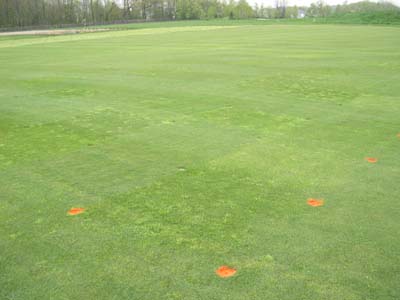Along with the warmer spring temperatures two things are certain; crabgrass will eventually germinate and annual bluegrass will profusely flower. For anyone managing bentgrass fairways or considering a bentgrass fairway renovation some of our recent research results will be of particular interest and provide some food for thought.
There has been some mild interest in the use of colonial bentgrass as part of some fairway bentgrass mixtures for the mid-West. This may be attributed to several reasons; 1.) this species is perceived to require fewer management inputs, 2.) it is less troubled by dollar spot than creeping bentgrass, 3.) golf course architects have an affection for “links-land” style golf courses and are trying to replicate the appearance of those courses. From a researcher’s perspective, one thing that is not certain is if this species is vigorous or competitive enough to crowd out some troublesome weeds like annual bluegrass. Soil fumigation prior to planting may be required in order to ensure that this species is able to fully mature and have the competitive edge.
Our recent ratings of the bentgrasses it was evident that there were dramatic differences in the amount of annual bluegrass invasion (see photo). For the most part the most strongly invaded cultivars were all colonial bentgrasses. The exception was Seaside, which is generally considered to be an inferior creeper because of its slow growth and low shoot density compared to newer bentgrasses, even Penncross. One newer colonial bentgrass cultivar, EWTR, is showing some promise and was similar to many of the industry standard creeping bentgrasses. The newest very dense canopy cultivars like Independence, T-1, Alpha, Penneagle II had minimal (< 2%) annual bluegrass. It remains to be seen how these cultivars will perform over the long term with respect to scalping, thatch, etc. We will surely be watching them closely for the next four years as we participate in the National Turfgrass Evaluation Program fairway bentgrass evaluation study. As always the NTEP web-site (http://www.ntep.org) is a good place to start to compare species and cultivars.
